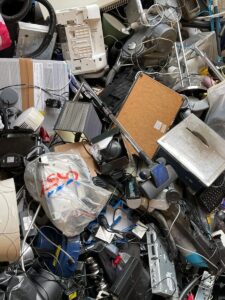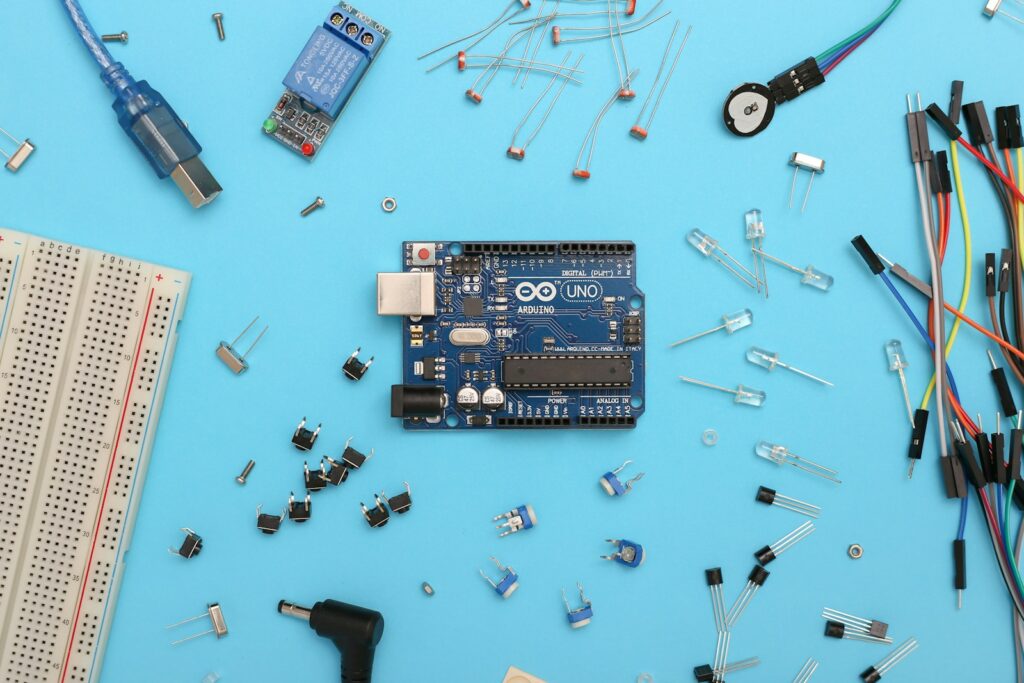In an era where electronic gadgets are integral to daily life, the culture of quickly discarding malfunctioning or outdated devices has led to significant environmental and economic challenges. However, a paradigm shift is underway, with the repair economy emerging as a pivotal solution to the unsustainable consumption patterns of electronic products. This burgeoning economy emphasizes the repair, refurbishment, and recycling of electronic devices, aiming to extend their lifespans, reduce waste, and decrease the demand for new resources.
The burgeoning repair economy stands as a beacon of sustainability and economic resilience in the era of rapid electronic consumption. Focusing on the repair, refurbishment, and recycling of electronic devices, it aims to curb the environmental toll of e-waste, foster economic growth through job creation, and promote a culture of sustainability among consumers. This shift addresses the critical challenges of e-waste management, resource scarcity, and the pervasive culture of disposability, underscored by the design of products for obsolescence and restrictive manufacturer policies. Legislative efforts like the Right to Repair movements, alongside community-driven initiatives such as repair cafes, are pivotal in supporting this paradigm shift. By advocating for more repairable product designs and empowering consumers to choose repair over replacement, the repair economy not only mitigates environmental impact but also ushers in significant economic opportunities, fostering a more sustainable and equitable future. However, overcoming the challenges of cost, parts availability, and manufacturer resistance requires a concerted effort across all stakeholders, emphasizing the need for continued advocacy, innovation, and policy support to fully realize the potential of the repair economy.
This article delves into the importance, challenges, and potential of the repair economy, particularly in the context of electronic products.
The Significance of the Repair Economy
The repair economy stands at the confluence of environmental sustainability and economic resilience. By encouraging the repair of electronic products, from smartphones to laptops, it addresses several critical issues:
Environmental Impact: Electronic waste (e-waste) is one of the fastest-growing waste streams globally, with millions of tonnes generated annually. This waste not only takes up landfill space but also releases harmful substances into the environment. The repair economy mitigates this issue by reducing the volume of e-waste and conserving the raw materials and energy required for new products.
Economic Benefits: Repair services create local jobs and foster skills development, contributing to a vibrant circular economy. Consumers also benefit financially from repairing devices rather than purchasing new ones, promoting a culture of sustainability.
Resource Efficiency: With the increasing scarcity of certain raw materials used in electronics, repairing and reusing existing devices become crucial strategies for resource conservation.
Challenges in Promoting Electronic Repairs
Despite its potential, the repair economy faces significant obstacles, particularly in the electronics sector:
Designed Obsolescence: Many electronic products are designed for a limited lifespan, with manufacturers often prioritizing new sales over the longevity of their devices. This practice not only encourages a throwaway culture but also complicates repair efforts.
Restrictive Manufacturer Policies: Manufacturers sometimes implement policies that restrict third-party repairs, such as using proprietary screws, withholding repair manuals, or threatening warranties. These practices limit the options available to consumers and repair businesses.
Economic Viability: The cost of repairs, driven by the price of spare parts and labor, can sometimes approach or exceed the cost of purchasing new devices, discouraging consumers from opting to repair.
Legislative and Community Initiatives
Recognizing the importance of the repair economy, various stakeholders are pushing for change through legislative means and community initiatives:
Right to Repair Movements: These movements advocate for legislation that requires manufacturers to make their products more repairable and to provide consumers and independent repair shops with access to necessary tools, parts, and information.
Repair Cafés and Workshops: Community-driven repair cafes and workshops offer spaces where individuals can bring their broken items and learn how to repair them, fostering a culture of repair and sustainability.
Refurbishment and Recycling Programs: Some manufacturers and third-party companies offer refurbishment programs for used electronics, preparing them for resale or donation. Additionally, responsible recycling programs ensure that valuable materials in e-waste are recovered and reused, minimizing environmental impact.
The Economic Potential of Repair
The repair economy not only contributes to environmental sustainability but also represents a significant economic opportunity. The demand for repair services is growing, driven by increasing consumer awareness and legislative changes. This growth could revitalize local economies, create diverse job opportunities, and stimulate innovation in repair technologies and logistics.
Innovation in Product Design
Innovation in product design is paramount. Manufacturers can adopt modular designs that allow for easy replacement of parts or upgrades. This not only extends the product’s lifespan but also reduces waste and the demand for new resources. Companies like Fairphone, with their modular smartphones, are leading examples of how design innovation can support sustainability and the repair economy.
Legislative Support
On the legislative front, the push for Right to Repair laws is gaining momentum. Such legislation compels manufacturers to provide the necessary manuals, tools, and parts for repair at a reasonable price. This not only democratizes repair but also challenges the monopolistic control some manufacturers exert over repairs. The European Union, with its Ecodesign Directive, is setting a precedent, requiring manufacturers to make appliances longer-lasting and to supply spare parts for machines for up to 10 years.
 The Role of Consumers
The Role of Consumers
Consumers also play a pivotal role. By choosing repairable products, utilizing repair services, and advocating for their right to repair, consumers can drive change from the ground up. Awareness and education are crucial in this regard. The more consumers understand the environmental and economic benefits of repair, the more they can make informed choices that support the repair economy.
The Economic Landscape of Repair
The economic implications of a thriving repair economy extend far beyond mere waste reduction, heralding a transformative impact on both local economies and the broader consumer market. At its core, the repair economy cultivates a myriad of skilled jobs, from technicians and engineers specializing in electronic repairs to experts in refurbishment processes. These roles demand a diverse set of skills, including technical proficiency, creativity in problem-solving, and an in-depth understanding of electronics, thereby contributing to workforce development and skill enhancement within communities.
Local economies stand to benefit significantly from the growth of the repair economy. As demand for repair services increases, we are likely to witness a revitalization of local repair shops. This resurgence fosters community resilience, keeping money within local economies and reducing dependence on external manufacturers. Small businesses, the backbone of many local economies, can diversify their services to include repair and refurbishment, opening up new revenue streams and encouraging sustainable business practices.
Moreover, the repair economy stimulates the secondary market for refurbished and repaired goods. This market segment offers consumers high-quality, like-new products at a fraction of the cost of new items, making technology more accessible to a wider audience. This accessibility is particularly crucial in bridging the digital divide, allowing lower-income individuals and families to afford essential electronic devices such as computers, smartphones, and household appliances.
The environmental benefits of the repair economy also have economic ramifications. By extending the life cycle of electronic products, the repair economy reduces the demand for new resources, consequently lowering the environmental costs associated with extraction, manufacturing, and distribution. This sustainable approach can lead to cost savings for both businesses and consumers, as well as contribute to the global effort to mitigate environmental degradation and climate change.
Furthermore, the growth of the repair economy encourages innovation in product design and service delivery. Manufacturers may be incentivized to design products with repairability in mind, potentially leading to a shift in consumer electronics that prioritizes durability and ease of repair. Such a shift could redefine market competition, placing a premium on sustainability and long-term value over disposability and planned obsolescence.
Finally, the repair economy emphasizes the importance of community engagement and consumer empowerment. By fostering a culture that values repair and maintenance, it encourages consumers to make more sustainable choices, which in turn drives demand for repair services. This creates a virtuous cycle that supports economic development, environmental sustainability, and social well-being.
Challenges Ahead: A Sustainable Path Forward
Despite the promising outlook, challenges remain. The cost of repairs, availability of parts, and the willingness of manufacturers to embrace this shift are significant hurdles. Overcoming these challenges requires a concerted effort and collaboration between all parties involved. Education campaigns, incentives for sustainable practices, and continuous advocacy are vital.
The repair economy represents a crucial step towards a more sustainable and equitable future. It offers a path that balances the benefits of technology with the need for environmental stewardship and social responsibility. As we continue to advance in our technological capabilities, let us also embrace the principles of sustainability and repairability. In doing so, we not only preserve our environment for future generations but also create a more inclusive and economically vibrant society. The repair economy isn’t just about fixing what’s broken; it’s about rethinking our relationship with technology to create a world where progress and sustainability go hand in hand.
For the repair economy to reach its full potential, a multifaceted approach is necessary. This involves not only changing consumer behavior and corporate practices but also implementing supportive policies and fostering a culture that values repair and maintenance. Education and awareness-raising about the environmental and economic impacts of e-waste and the benefits of repair are crucial.
The repair economy in electronic products represents a sustainable pathway forward, mitigating environmental impact while fostering economic growth and consumer empowerment. By embracing and supporting the repair economy, society can move towards a more sustainable and equitable future, where technology serves not just the needs of the present but also the well-being of future generations.
Conclusion
As we navigate towards this sustainable future, it’s imperative that all stakeholders — from policymakers and manufacturers to consumers and repair professionals — play their role effectively. Technology companies, in particular, have a critical role in this transition. By designing products with repairability in mind, they can significantly reduce the environmental footprint of their products and support the repair economy. This shift not only benefits the environment but also aligns with growing consumer demand for durable and repairable products.
The economic implications of a thriving repair economy are profound. Repair services not only create skilled jobs but also stimulate local economies. The growth of the repair economy could see a resurgence in local repair shops and a boost in the secondary market for refurbished and repaired goods. This not only supports economic development but also provides affordable options for consumers, making technology accessible to a broader audience.
In conclusion, the thriving repair economy offers a holistic approach to addressing the challenges posed by electronic waste, while simultaneously providing substantial economic benefits. It creates skilled jobs, stimulates local economies, revitalizes the secondary market, and makes technology accessible to a broader audience, thereby contributing to a more sustainable and equitable future.





